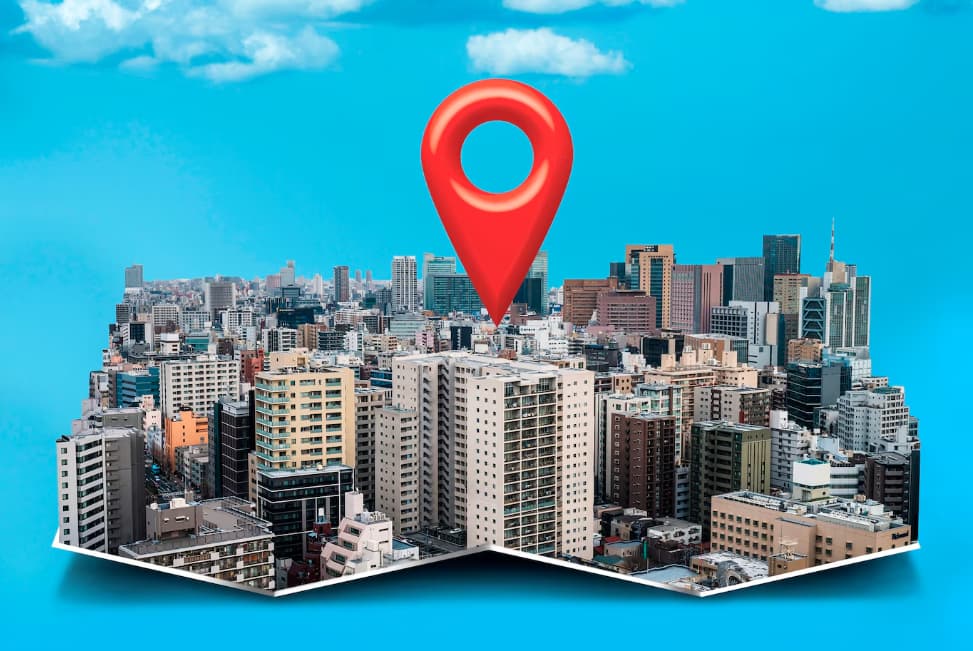In today’s digital age, having a strong online presence isn’t just about being visible globally—it’s about standing out in your backyard.
Welcome to the world of Local SEO, where your business can shine brightly in local search results and attract nearby customers like moths to a flame.
Imagine this: A potential customer in your area pulls out their smartphone, searches for a product or service you offer, and boom! Your business pops up at the top of their results.
That’s the power of Local SEO, and it’s not just a nice-to-have it’s essential for any business looking to thrive in their community.
Did you know that a whopping 46% of all Google searches have local intent? That’s right, nearly half of all people using Google are looking for something close by.
If you’re not optimizing for local search, you’re potentially missing out on a massive chunk of your target audience.
Mastering Local SEO

In this guide, we’ll walk you through six key strategies to boost your Local SEO game.
From claiming your Google My Business listing to creating locally-focused content, we’ll cover everything you need to know to dominate local search results and draw in that sweet, sweet nearby traffic.
Let’s dive in and get your business on the local digital map!
What is Local SEO?
Before we jump headfirst into strategies, let’s make sure we’re all on the same page.
Local SEO stands for Local Search Engine Optimization, and it’s all about making your business more visible to people searching for products or services near them.
You know, when someone Googles “best organic coffee shop near me” and your coffee shop magically appears at the top of the results? That’s the power of local SEO.
But why is it important? Well, consider this: 46% of all Google searches have local intent. In simpler terms, nearly half of the people using Google are looking for stuff close by.
That’s a huge chunk of potential customers you wouldn’t want to miss out on. Looking to boost your Spotify followers? You can easily acquire Spotify followers to enhance your social presence.
Strategy 1: Claim Your Google My Business Listing
Let’s start with the basics, shall we? The very first thing you should do is claim your Google My Business (GMB) listing. It’s like putting your business on the digital map, literally. Google is everyone’s go-to when they want to find something local, so make sure you show up.
- Claiming Your GMB Listing: If you haven’t already, head over to Google My Business and claim your listing. It’s usually a straightforward process, but be ready to provide some basic info about your business. Make sure your name, address, and phone number (NAP) are consistent everywhere.
- Add Accurate Business Information: Fill out your GMB profile with accurate and up-to-date information. Include your hours of operation, website, and a few eye-catching photos. Google loves businesses that provide thorough information.
- Collect Reviews: Encourage your happy customers to leave Google My Business reviews on your GMB listing. Positive reviews not only boost your credibility but also improve your search rankings.
Strategy 2: Optimize Your Website for Local SEO
Your website is your online storefront, and it should be as welcoming as your physical one. Here’s how to spruce it up for local SEO:
- Local Keywords: Identify and use local keywords throughout your website. Include your city or neighborhood in your content, titles, and meta descriptions. For instance, if you’re a vegan bakery in San Francisco, don’t forget to sprinkle in “San Francisco vegan bakery” here and there.
- Mobile Optimization: Ensure your website is mobile-friendly. Most local searches happen on mobile devices, so a responsive design is a must. A clunky website can send potential customers running faster than you can say “organic quinoa muffin.”
- Local Schema Markup: Implement local schema markup on your site. It’s like giving Google a secret decoder ring to understand your content better and provide more relevant search results.
Strategy 3: Create Local Content
Content is king, and that’s as true in the realm of local SEO as it is anywhere else. Create content that not only showcases your expertise but also caters to your local audience:
- Local Blog Posts: Write blog posts that are relevant to your local community. Share local news, events, or even stories about your customers’ experiences with your business. It’s a great way to connect with your audience.
- Local Landing Pages: If you serve multiple locations, create dedicated landing pages for each. These pages can have location-specific content, reviews, and contact information, making it easier for people to find you.
Strategy 4: Build Local Citations
Citations are like digital references for your business. They include your NAP information and should be consistent across the web:
- Online Directories: Get your business listed in local online directories. Think Yelp, Yellow Pages, and any industry-specific directories. These listings can act as valuable backlinks to your site.
- Local Backlinks: Build relationships with local businesses and ask for backlinks to your website. Google sees these backlinks as votes of confidence in your business, boosting your credibility.
- NAP Consistency: Make sure your NAP information is consistent across all platforms. Even a small discrepancy, like “St.” in one place and “Street” in another, can confuse search engines.
Strategy 5: Engage on Social Media
Social media is more than just cat videos and memes. It’s also a potent tool for local SEO:
- Claim Social Profiles: Claim your business profiles on major social media platforms like Facebook, Twitter, and Instagram. Consistency in branding is key here, too.
- Post Local Updates: Share content and updates that are relevant to your local audience. It could be about local events, promotions, or simply engaging with your customers in the area.
- Encourage Reviews: Use social media to encourage customers to leave reviews. It’s a great way to boost your online reputation and local SEO.
Strategy 6: Monitor and Analyze
You can’t improve what you don’t measure. Keep a close eye on your local SEO efforts:
- Google Analytics: Set up Google Analytics to track your website’s performance. Pay attention to local traffic and user behavior.
- Google Search Console: Use Google Search Console to monitor how Google views your website and identify any issues.
- Local SEO Tools: Consider using local SEO tools like Moz or BrightLocal to get more insights and track your local rankings.
Also Use: Best Scheduling Apps for Small Business
Final Thoughts:
And there you have it, folks! These are some of the key strategies you can use to dominate local search and attract nearby traffic to your business.
Local SEO might seem like a complex puzzle at first, but with the right pieces in place, your business can thrive in the digital landscape.
Remember, local SEO is an ongoing process. It’s not a set-it-and-forget-it kind of deal. Keep optimizing, engaging, and monitoring to stay on top of the local game.
So, go ahead and put these strategies into action, and watch your local visibility and customer base grow.
Good luck, ethical spenders, and may the local SEO odds be ever in your favor!



